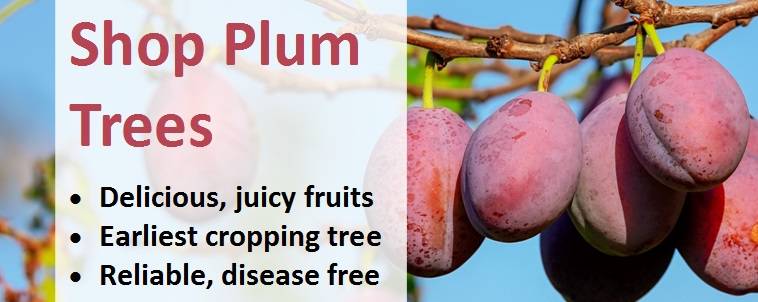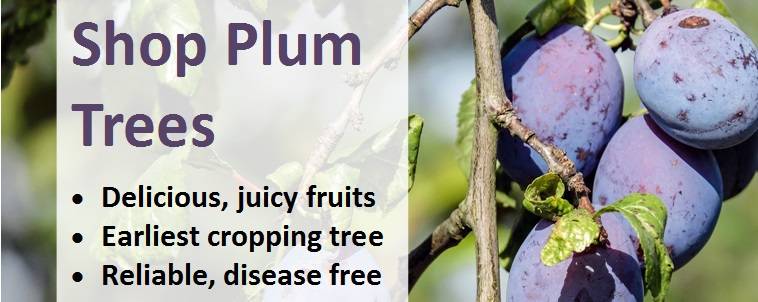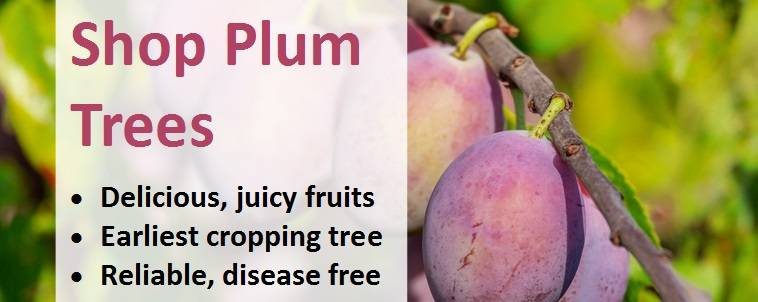How to Grow Your Own Plum Tree
As one of the earliest crops to flower in the fruit garden, plum trees are reliable and reasonably disease free, producing attractive blossoms and delicious plump fruit. Easy to grow, making them a good choice for the novice gardener, there are hundreds of cultivars to choose from depending on what you're looking for - three of the best are detailed below. Plum trees fall into three main types - dessert plums best eaten raw; culinary plums best cooked or made into jams; and dual purpose plums, which are equally as good cooked or eaten fresh like a dessert plum. All of the 3 varieties we recommend below are dual-purpose plums.
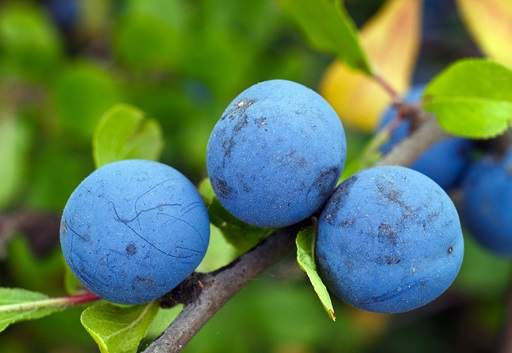
The choice of rootstock is just as important as the variety you select. Like all fruit trees, plums are not grown on their own roots. The top of the tree (the part that produces the plums) is grafted onto different roots (called a rootstock), and the roots control the size of the tree. The main types of rootstocks used for plum trees are St Julien and Pixy:
- St Julien A rootstock- semi-dwarfing, providing a medium-sized tree of around 4m to 4.5m (13-15ft). If you have adequate space in your garden and don't mind using it for a plum tree, we recommend you opt for the extra vigour of the St Julien rootstock
- Pixy (sometimes called Pixie) rootstock - dwarf with an eventual height of 2.5m to 3m (8ft to 10ft)
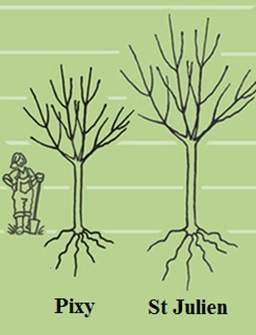
The 2 main types of rootstock for plum trees - Pixy and St Julien
Growing conditions also affect the height, with perfect growing conditions resulting in a taller tree compared to less favourable conditions, even on the same rootstock. We indicate the 'Eventual Height' of all fruit trees we sell on our individual plant pages, so whilst it's useful to be aware of the different types of rootstock, you don't need to remember the sizes that they each grow to because these are clearly indicated for you when choosing a tree to buy.
Recommended Plum Varieties
The best plum varieties are:
Plum Marjorie's Seedling - large, oval, dark purple-blue plums that are blotched black and have well-flavoured, juicy yellow flesh. Becoming quite sweet when fully ripe, fruits are mainly used for culinary purposes but can also be eaten fresh or used as a dessert fruit. Plums can be harvested from late September and keep for a month if refrigerated. Pollination group C.
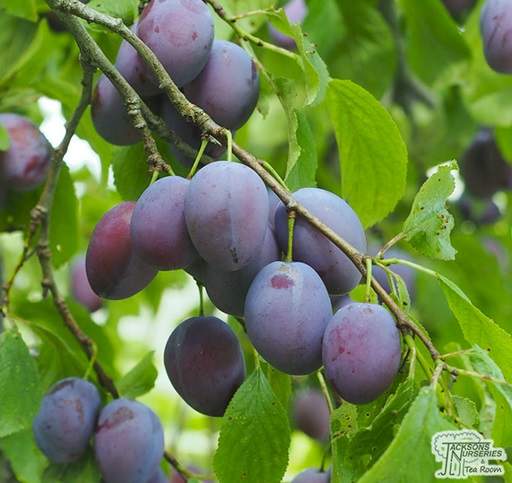
Plum Victoria - the most popular plum amongst both amateur and commercial growers producing masses of single, white flowers in spring followed by a reliable, abundant crop of large, oblong-shaped, pale red plums. These are ready for picking in late August with rich, golden-yellow flesh that's suitable for cooking, bottling or just eating fresh. Should be thinned out to guarantee a strong annual crop. Self-fertile.
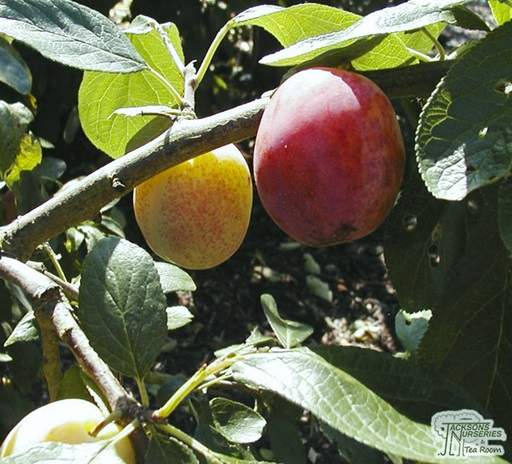
Plum Czar - popular, reliable cropper producing medium-sized, dark purple oval fruits with yellowish-green flesh and an excellent acidic flavour that's perfect for cooking purposes but also good for desserts when fully ripe. It's suitable for training on a wall and will be ready for picking in early August. Self-fertile but produces a more abundant crop when other plums with a similar flowering time are planted nearby.
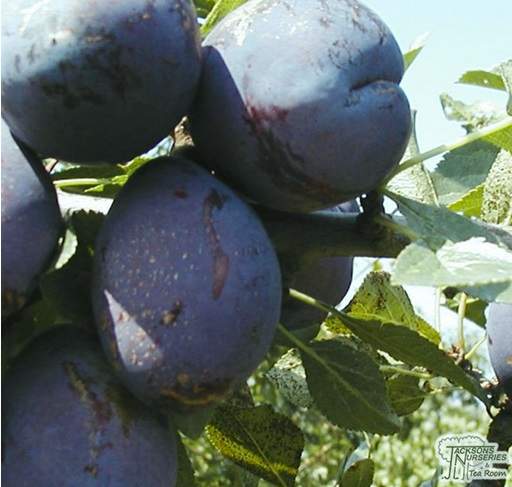
Or, as an alternative / addition to a plum tree, consider a gage. Gage trees are a sub-group of the European plum tree. They look similar to plums but the fruits are smaller and rounded, and either green of golden-yellow in colour. They have a unique, distinctively-rich, sweet, melon-like flavour. Gage 'Oullins Gage' is the best:
Gage 'Oullins Gage'- a large, golden-yellow deciduous fruit with a good taste. Fruits are large for a Gage, more like a small plum. The fruits are ideal for bottling, freezing or eating fresh. For culinary use, pick slightly earlier when the fruits are still firm. Self-fertile but capable of pollinating other gage or plum trees that also flower in spring.
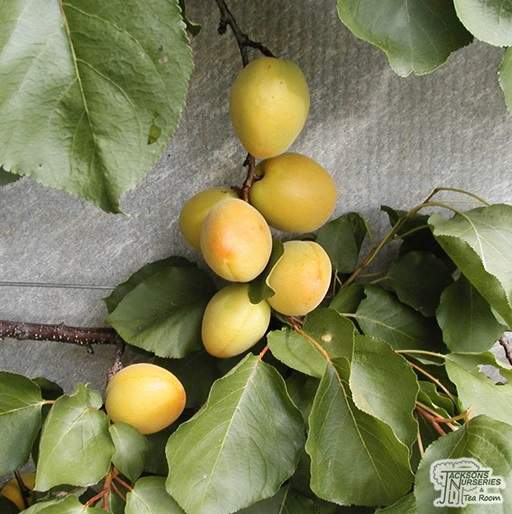
Fruits
Plums are delicious plump stone fruits which, in the case of dual purpose varieties, can be eaten straight from the tree or made into jams, pies and crumbles. European Plums (like all those indicated above) have a much better and interesting range of flavours than Japanese plums, and darker plums generally have a stronger flavour which carries over into jams, preserves and other culinary uses. Most important of all, the flavour of ripe home-grown plums is vastly superior to any fruit on the supermarket shelves. The plum season lasts from late July until September, with most varieties ripening over a 1-2 week period in August, during which the tree can be picked regularly to ensure a steady supply of fruit. Plums don't store as well as some other fruits, so are best eaten right away or put straight in the fruit bowl.
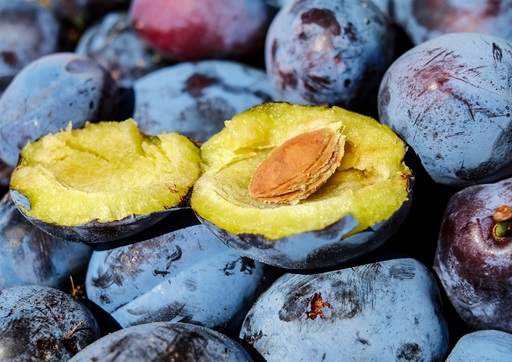
Plums don't keep as well as some other fruits, so are best eaten fresh or put straight in the fruit bowl
Plum Tree Planting Advice
Container grown trees can be planted at any time of year providing there is not a frost and the ground is not waterlogged, although autumn planting is preferable, as they need less watering than ones planted in spring or summer. Bare root trees can be planted from late autumn to the end of winter as this is when the tree is in its dormant stage. If the ground is frozen, or you can't plant for some other reason, 'heel' in your plum tree in a shallow trench, angling the trunk and covering the roots at the bottom of the trunk with moist soil. Self-fertile plum trees can be planted singly and will still produce plums; trees that are not self-fertile require another plum tree nearby, which flowers at roughly the same time, to allow it to be pollinated and therefore fruit.

Choose a sunny, sheltered position, avoiding saturated or shallow soils. Plums actually have quite high moisture demands, so a loamy or even clay soil is fine providing it does not 'puddle'. Plum trees themselves are very hardy, but the flowers are easily killed by frosts which significantly reduce fruit yields, so avoid planting in frost pockets or cold, exposed sites. Another reason to situate your tree in a location where it will be protected from strong winds at pollination time is because pollinators such as insects and bees stay in hiding when winds are gusting, and you need these pollinators to increase your fruit yield. We recommend growing your fruit tree(s) along a south-facing wall or fence. The wall will soak up the heat of the sun, allowing for a longer ripening time.
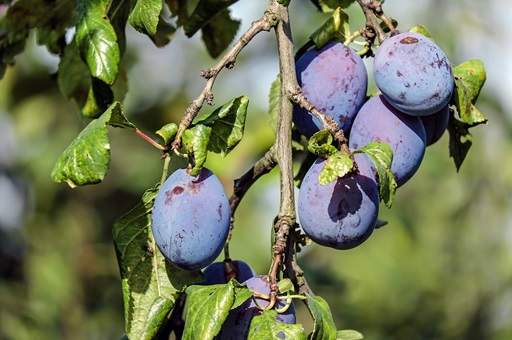
Plant your plum tree against a sunny, south-facing wall or fence, if possible
When you're ready to plant, give the roots of the tree a good soaking before planting. Be careful to ensure the depth of the planting hole is adequate to accommodate all of the root system - it should be the same depth and one-third wider than the root ball. Mix in plenty of bulky organic matter such as manure, leaf mould or well-rotted garden compost, particularly if you have a sandy or shallow chalky soil. A few handfuls of blood, fish and bone fertiliser worked into the soil will also provide a long-lasting supply of nutrients. At this stage, recheck the depth of the planting hole using a cane or rod; it is vital to ensure that the soil on the tree is level with the soil on the ground, such that the graft is 5-10cm above the ground. Firm down the planting hole with your boot, water well and install a stake or training ties as required. Dwarf plum trees that have been grafted onto a pixie rootstock are also suitable for growing in a container providing the pot is sufficiently large to prevent the soil drying out in the heat of the summer. If you choose to container grow your tree, plant with multi-purpose compost and peat and incorporate a generous amount of water retaining gel to help maintain the required moisture level.
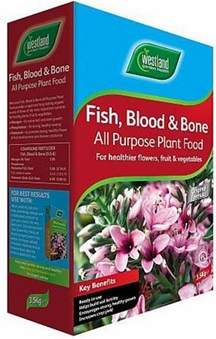
Add a few handfuls of fish, blood and bone fertiliser into the planting hole of your plum tree
Garden Care
Mulch annually in spring using an organic material such as farm-yard manure or well-rotted garden compost to give your tree an extra lease of life with fresh nutrients, assist with moisture retention and keep the roots cool. We'd also recommend re-applying the blood, fish and bone feed (three handfuls per tree) each year just before mulching. Keep your tree well-watered during periods of prolonged, dry weather and weed during the summer to ensure your tree is not out-competed by perennial weeds.
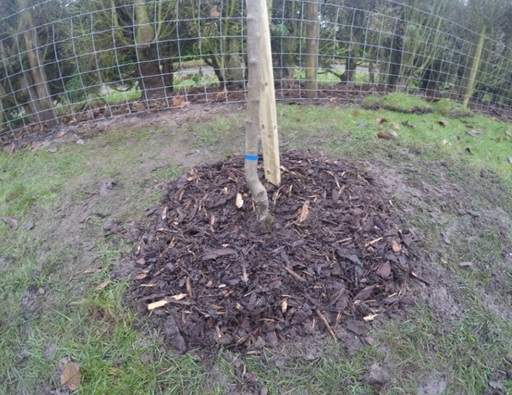
Mulch your plum tree each spring to provide extra nutrients and assist with moisture retention
Pruning
Plum trees are easy to prune and tolerant of heavy pruning if you become over-zealous with the loppers. However, they do differ from most other fruit trees because they should only be pruned when they are in full growth (July is best) and not in the winter; winter pruning leaves them exposed to silver leaf disease. Summer pruning will mean you're chopping branches off your plum tree when the fruit has already started to form, so you'll be removing some of it in the process. Avoid the temptation to under-prune thinking that you don't want to cut too much fruit off. Most plum trees, Victoria plum trees in particular, produce far too much fruit which can actually cause the branches to break under its weight, ruining the structure of the tree and often leave jagged open wounds which are a source of fungal disease. Correct pruning will reduce this risk, as well as ensuring the health of the tree and remaining crop. In fact, if too many plums are produced, each fruit will be small and may not ripen, so removing some fruits as part of the pruning process will ensure the remainder are full, healthy and taste delicious.
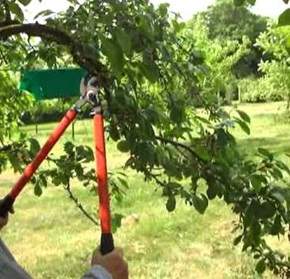
Prune plum trees in the summer, and don't be afraid of lopping off some of the fruit
The aim when pruning is to create an open, vase-shape to allow free through-flow of air between the branches and stems. Firstly, eliminate any areas of congested, crossing growth and any low-hanging branches that may touch the ground under the weight of the fruit (this is only normally necessary as your tree becomes more developed). The centre of the tree should be left relatively free from branches and foliage such that plenty of sunlight can get to all fruiting wood. Secondly, use secateurs or loppers to cut back this season's growth of the main shoots to half their length, cutting just above a leaf. When your tree is first becoming developed, prune to encourage 3 or 4 major branches to come off the top of the trunk at about a 45 degree angle - this will help foster the desired vase-shape.
Share this page:

